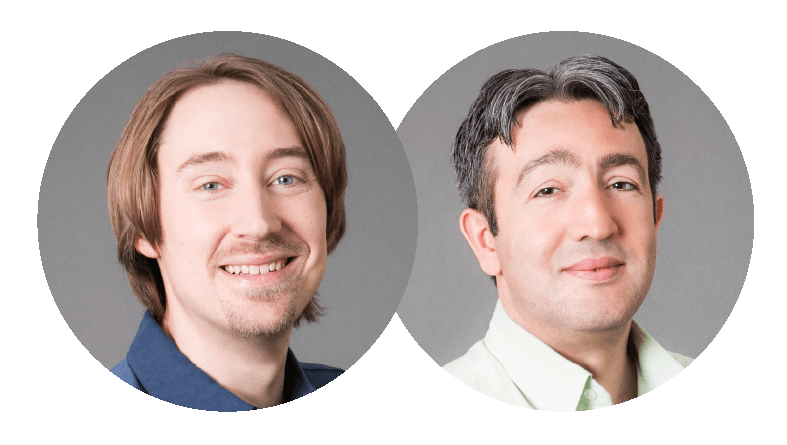The Love Algorithm
The online dating website eHarmony is responsible for nearly 5 percent of U.S. marriages, according to company stats. In all, 438 people tie the knot every day as a result of its love algorithms. In a study published in 2012, the divorce rate of married couples that met on eHarmony was roughly 50 percent of those who met in any other way. This means you’re significantly more likely to divorce if you and your spouse didn’t meet on eHarmony.
Dr. Jonathan Morra, who leads eHarmony’s data science, machine learning and predictive modeling teams, and Jonathan Beber, a researcher scientist who leads the design of eHarmony’s questionnaire, approached Aram Galstyan and Greg Ver Steeg, researchers at the USC Information Sciences Institute (ISI), as well as faculty in USC Viterbi’s Department of Computer Science, with a long-standing problem: how to trim down the exhaustive psychometric assessment known as the relationship questionnaire.

“No user likes to sit at their computer and take hundreds of questions,” Beber said. “But we feel we have to ask that much to assess your personality type. Greg and his team are helping us figure out what is the minimum amount of questions we can ask without losing the predictive power in our compatibility models.”
“It’s an interesting optimization problem,” Galstyan said. “What started out with some 500 questions has become 145 questions over time. What if we could get 99 percent of that information with, let’s say, only 50 questions? What are those questions, and what is that trade-off?”
Love, like all of life, is full of patterns.
Galstyan and Ver Steeg, both former physicists, are solving this using methods inspired by quantum physics to shed light on something Albert Einstein deemed “spooky actions at a distance” — something he thought was impossible. John Stewart Bell later proved him wrong with a straightforward test called Bell’s Inequality.
“Essentially, we’re trying to get to the hidden factors that result in long, happy relationships,” Ver Steeg said. “It works not just in quantum physics, but also in human behavior.”
They boiled down the relationship questionnaire with a process called correlation explanation, or CorEx. Over the years, they have used CorEx to unearth hidden factors in a host of problems, from unsolved gang-related crimes to mapping brain activity and predicting online extremism.
“The idea behind CorEx,” Ver Steeg said, “is to ask what are the hidden factors that explain correlations in the data. For example, how different parts of your brain light up at the same time, or the way you answer question A always predicts the way you answer question B. It could be anything.”
Galstyan and Ver Steeg then look closely at that data and begin to peel away its underlying structure.
Consider these questions, for example: Are you generous? Are you affectionate? Do you try to accommodate the other person’s point of view? These show up all together in one group. There’s a hidden factor that explains why they are related.
“These hidden factors themselves are interrelated and reveal higher-level patterns in the data,” Galstyan said. “Answers to questions like, how important is it that a serious relationship needs to be exclusive, and do you think being monogamous causes relationships to be boring over time, reveal something about how caring, empathetic and generous you are.”
“At the end of the day, love is quantifiable,” said Morra, who is also interested in measuring attraction based on users’ profile pictures — that is, what your facial expressions in photos say about your personality.
When you think about it, it makes sense that love would lend itself to mathematics. Love, like all of life, is full of patterns. It’s no surprise that engineers are helping us make one of life’s hardest, often most irrational, emotional decisions with the power of science and big data.




